For the tree planting portion of our Carrick River and Tree Planting Education Project we have bought an Earth Auger (petrol powered earth drill) to help dig the holes for the stakes and the trees that we will be planting with school pupils. This will ensure that whatever soil/ground we encounter we’ll be able to bore holes enabling us to plant trees into stony or frozen river banks.
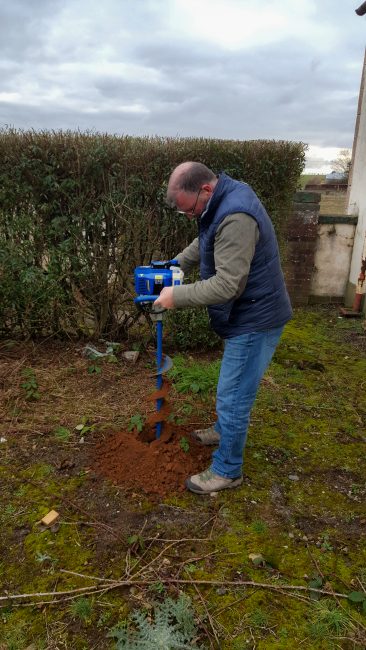
Stuart testing the earth auger, we drilled a number of holes in which we planted willow whips of varying diameters. As you can see from the picture the soil here is a brown earth, which is free draining and has a great texture with lots of pores which store water and oxygen enabling quick growth.
This Thursday we begin this part of the project with Minishant and Crosshill Primary Schools after which we will be visiting another 8 schools in the Carrick region. The children will each plant a tree and will learn about the importance of woodlands in riparian settings with regards to river bank stabilisation, nutrient cycling, how trees provide oxygen, remove carbon dioxide and keep our watercourses cool.
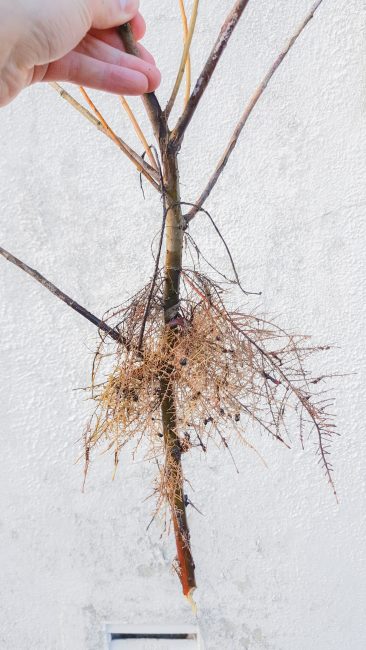
An example of the roots a thin willow whip can generate. Its root systems like this that many riverbanks would benefit from. This approach is not a quick fix but will provide long lasting benefits for very little expense.
To test the auger we drilled a series of holes in the office garden/tree nursery and planted a number of willow cuttings of various sizes. These cuttings have been stored in water for the past few months and have developed extensive root systems. This is typical of willow as it produces a natural rooting hormone that enables very quick root growth. These cuttings can be ‘plugged’ into soil where, provided there is sufficient moisture present will quickly develop roots and foliage. Over the following months I will take a picture of these cuttings on a daily basis and present the results in a time lapse video later in the year. We know from work we have carried out over the last two years just how quickly willow produces root mass as well as foliage. This exercise will be very interesting as we’ll be able to monitor the results more closely.
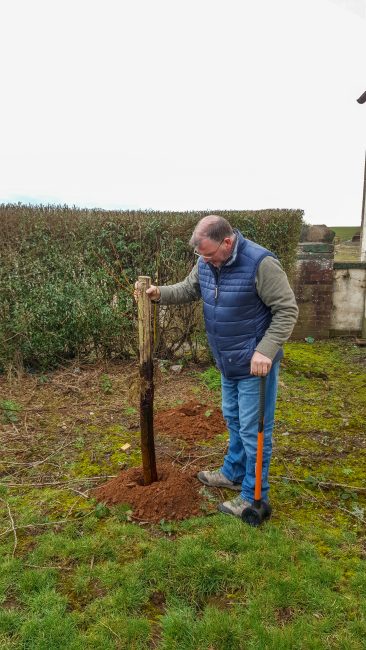
A large willow stake with good root growth at the bottom about to be placed into it’s pre dug hole. In this instance the willow pole was too long for the hole and had to be ‘persuaded’! An extension for the drill bit may be a useful addition to this tool as we have plans to trial some new techniques this year….watch this space for developments.
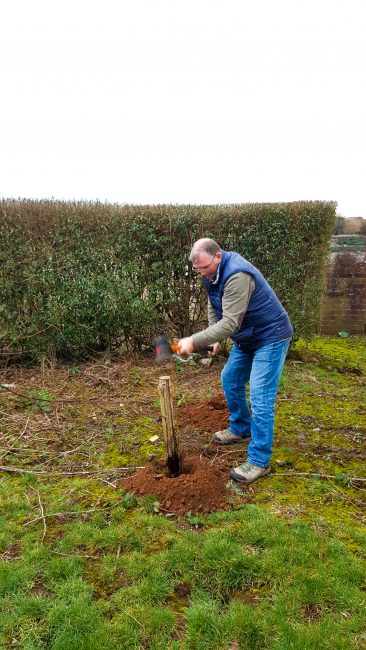
Stuart ‘persuading’ the willow stake into the ground to ensure all the roots are covered by soil.
Regular readers of the blog will know that we have been active in utilsing green engineering techniques over the last couple of years. Developing our understanding of how different species of willow react to being cut and plugged into different soil types will allow us to fine tune upcoming projects and better educate interested individuals and angling clubs. It’s this type of pragmatic work that will provide lasting benefits to our river banks, water quality and ultimately the inhabitants of our watercourses over years to come.
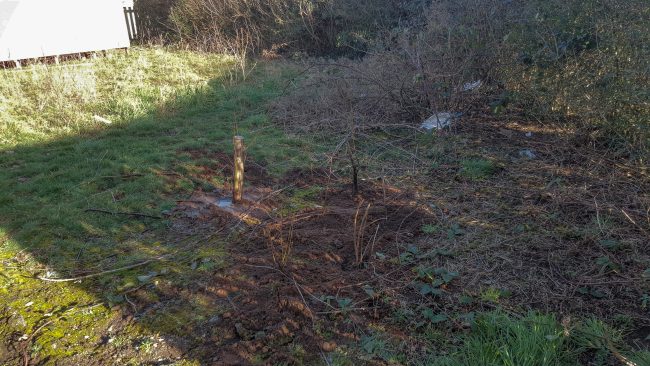
With the auger it only took a few minutes to plant these whips deep into the ground, we’ll watch with interest over the next few months and see how these develop.
Through the Carrick River and Tree Planting Education Project we hope to enthuse the next generation and with a little luck our freshwater environments will be in good hands.
Source: Ayshire River Trust – Willow/Earth Auger Trial
